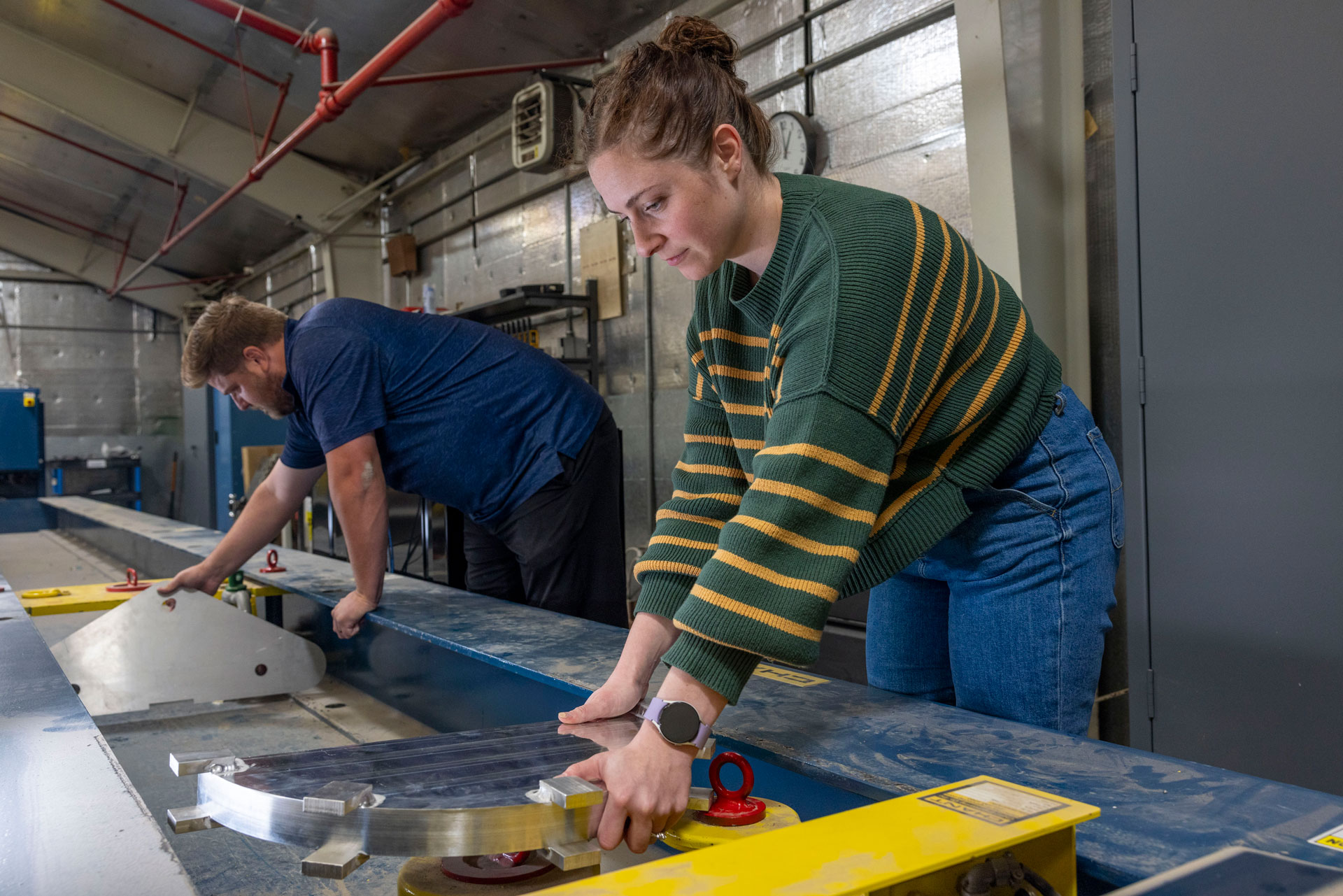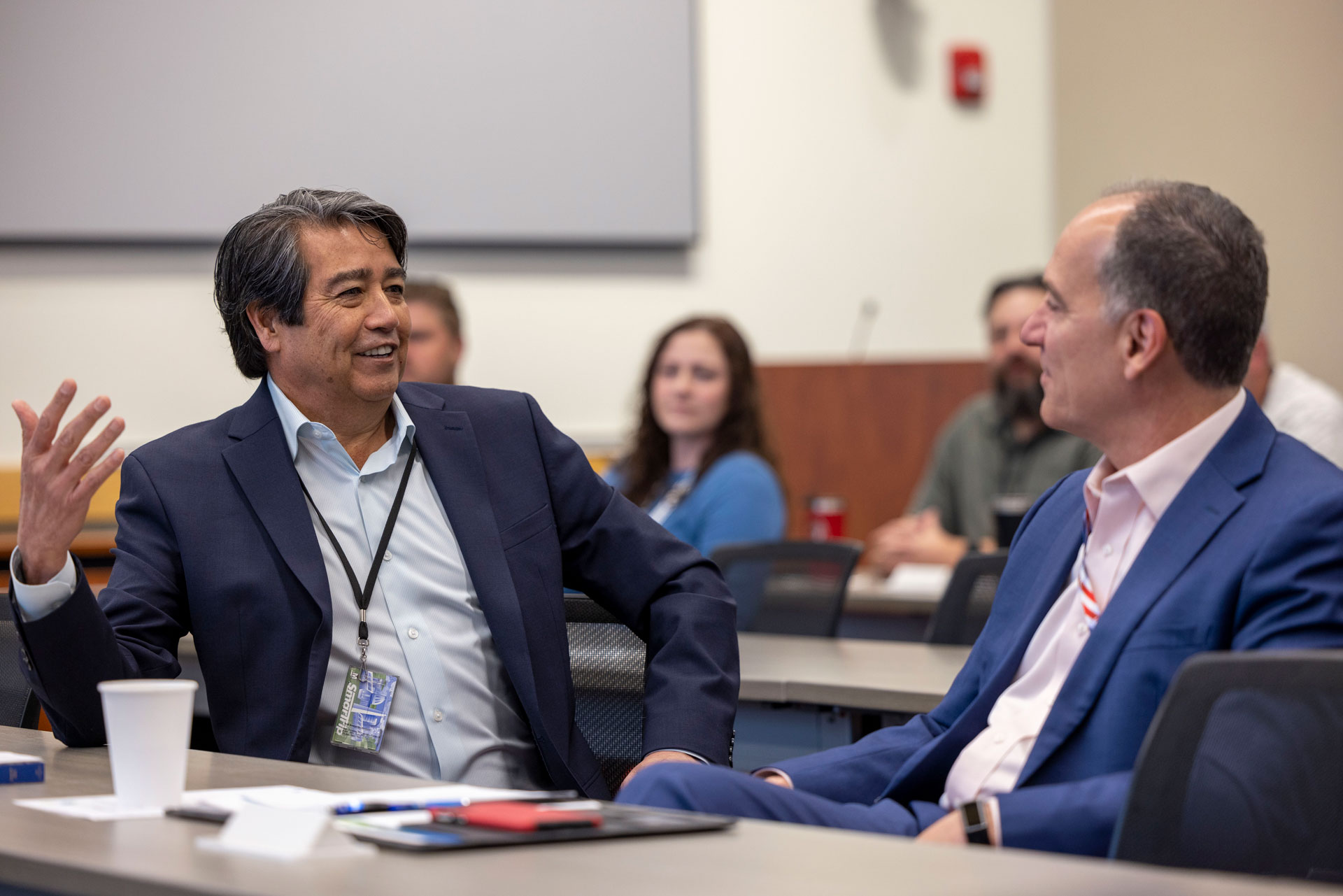As businesses and organizations across America increasingly adopt digital infrastructure and artificial intelligence, the energy demands on the power grid from data centers have surged. These centers, vital for storing and processing the data that artificial intelligence requires, consume vast amounts of electricity to power servers, maintain connectivity and manage cooling. Data centers are just one of many factors increasing demand and pressure on the electric grid, which now faces the challenge of meeting growing consumer needs while adapting to a rapidly evolving energy landscape.
In addition, variable generation sources are creating new challenges for power companies as they navigate the complexities of balancing supply and demand. Simultaneously, the nation’s aging power infrastructure is struggling to keep pace with population growth and the increasing frequency of extreme weather events.
The challenges facing the power industry are monumental, extending far beyond keeping the lights on. Grid stability is now a matter of national security, underpinning everything from economic prosperity to defense infrastructure.
The stakes: Utility reliability and grid integration
“Reliability is everything in the utility industry,” says Gene Rodrigues, director of the U.S. Department of Energy’s (DOE) Office of Electricity. “No matter what we do in terms of creating a renaissance in generation resources, it doesn’t mean much if we can’t integrate it onto the grid. We must be able to prove we can bring new resources online while maintaining a resilient grid.”
At Idaho National Laboratory, addressing urgent national security challenges while enhancing infrastructure resilience is a fundamental mission. Now, the laboratory is tackling one of the key bottlenecks in the grid’s complex puzzle: the wires themselves. Industry researchers are developing modern, innovative power lines—known as advanced conductors—that are designed to transfer more power more efficiently while withstanding the effects of increasingly harsh environmental conditions from ice, fire, heat and wind.
INL is conducting a critical assessment of advanced conductors as part of a partnership with DOE’s Offices of Electricity and Cybersecurity, Energy Security and Emergency Response. The goal is to bolster the strength of the existing grid to ensure it can accommodate additional energy generation sources without sacrificing reliability.
“Conductor research and testing may not sound glamorous,” said Jake Gentle, an INL program manager. “But if we don’t get it right, none of the other innovations in energy technology will matter.”

Program Manager Jake Gentle updates Department of Energy leaders from the Offices of Electricity and Cybersecurity, Energy Security, and Emergency Response on the lab’s progress with the Advanced Conductor Testing project.
The project: Advancing grid infrastructure for the future
The multi-year assessment process starts and ends with industry collaboration. The first step is the Advanced Conductor Scan Report, a comprehensive document that lays out the industry’s current use, needs and gaps for adopting advanced conductors. Informed by extensive engagement with utilities, equipment manufacturers, associations, consultants and other national laboratories, the report and interactions led stakeholders—including the Lower Colorado River Authority, Bonneville Power Administration, Tennessee Valley Authority, American Electric Power and Western Area Power Administration—to provide INL with several spools of advanced conductors for testing.

INL researchers Crash Bell and Abby Neumann examine equipment designed to test the strength and durability of advanced conductor cabling.
“We’ve already seen incredible industry engagement and now we’re on Version 11 of the Scan report,” Gentle said. “There’s a real commitment to making sure that the report and testing data is credible, and that the information doesn’t just sit on the shelf. Industry partners have donated equipment, and we’re even designing and performing tests that no one has tried before, like burn evaluations, with assistance from the Forest Service’s Missoula Fire Sciences Laboratory, all while adhering to dozens of different industry standards.”
Testing extremes: Fire and ice
In the coming months, INL, along with industry testing partners—the National Electric Energy Testing Research and Applications Center (NEETRAC) and the Electric Power Research Institute—will conduct a series of rigorous tests on up to five types of advanced conductors.
In collaboration with industry partners, the team will conduct up to 50 distinct tests on each advanced conductor to assess material integrity. These tests will measure the conductors’ ability to withstand extreme heat and cold while evaluating their resistance to strain, stress, tensile strength, line creep (stretching), fatigue and aging.
From high winds and heavy ice loads to the intense heat of wildfires, the lab is exploring how advanced conductors perform under the most extreme conditions. Researchers will also conduct additional tests such as material characterization, accelerated aging and environmental assessments. The data gathered will provide credible scientific evidence to aid the power industry’s adoption and installation of these technologies, while also supporting the development of knowledge transfer and training curriculum to benefit utilities nationwide.

INL researcher Crash Bell displays a piece of advanced conductor cabling scheduled for testing at the laboratory.
One of the standout tests involves using propane gas to simulate wildfires up to 1900 C. Wildfire flame temperatures can range between 800 and 1200 C, making INL’s custom-designed fire test chamber well suited for controlled testing of extreme environments. This type of testing is essential, given the growing threat that wildfires pose to communities and transmission infrastructure. “We used to talk about wildfire season,” Rodrigues said. “But now it’s just wildfire year. And in some cases, it’s the power lines causing the fires.”
Lightning and other environmental conditions, including high winds and wildlife strikes, can also create fire conditions that affect the delivery of electricity and the resilience of power infrastructure.
In addition to fire testing, INL is conducting ice load tests using climate chambers that reach temperatures as low as -70 C. These tests assess how conductors perform in ice loaded cold climates, ensuring their reliability as weather patterns shift.
Although testing will continue well into 2025, both INL and DOE have committed to sharing relevant test results and data with the utility and power industries through presentations, conference papers and speaking engagements.
“Ultimately, one of our goals is to establish a national user facility that provides equipment manufacturers, utilities and power industry training institutions with access to INL’s full-scale assets,” Gentle said. “This would allow users the flexibility to configure our test range to meet real-world conditions in a safe and secure manner.”
Collaboration and looking ahead
The project’s success hinges on partnerships, with organizations like Georgia Power’s Klondike Training Facility and testing institutions such as the NEETRAC playing a vital role. Although INL is not a large-scale conductor testing or training facility like some of its industry partners, it provides unique testing capabilities and specialized expertise with hundreds of square miles of land and hundreds of miles of power lines for research and development. The laboratory’s approach to critical functions assurance, particularly in electric power, emphasizes defense and resilience. Additionally, as a federally funded research and development center, INL’s testing results are focused first on objectivity and technical excellence to help industry fill crucial knowledge gaps and improve the understanding of advanced conductors.

Assistant Secretary Gene Rodrigues from the Department of Energy’s Office of Electricity discusses the significance of the Advanced Conductor Testing project with INL Laboratory Director John Wagner.
With significant test results expected by the end of 2024, there’s growing anticipation about what INL’s work will reveal.
“This project is front and center for the Department of Energy and the [Energy] Secretary, and we’re having weekly discussions on how to get this information to the market,” Rodrigues said. “It’s not just about testing these technologies but ensuring the utility industry understands and integrates them into their systems.”
The future of training and standardization
As the grid modernizes, so must the workforce. One of the key takeaways already from INL’s conductor testing project is the need for national training programs for linemen and utility workers. Integrating advanced conductors onto the grid isn’t just about the technology — it’s also about training the people who will be working with them,” Gentle said.
“Line crew training can take several years,” he said. “If we’re going to see wide-scale adoption of advanced conductors, we need standardized training to include exposure to innovative technologies earlier on to ensure everyone knows how to handle and install these modern conductors safely and efficiently.”
This project represents just one way that INL and its partners are working to ensure the power grid is resilient and prepared for future energy demands. By testing advanced conductors and developing training programs, they aim to create a secure, adaptable grid capable of integrating emerging technologies and supporting the nation’s growing energy needs.

Members of the Advanced Conductor Testing project team pose for a group photo with Department of Energy leaders from the Offices of Electricity and Cybersecurity, Energy Security, and Emergency Response.
About Idaho National Laboratory
Battelle Energy Alliance manages INL for the U.S. Department of Energy’s Office of Nuclear Energy. INL is the nation’s center for nuclear energy research and development, celebrating 75 years of scientific innovations in 2024. The laboratory performs research in each of DOE’s strategic goal areas: energy, national security, science and the environment.
Follow us on social media: Facebook, Instagram, LinkedIn and X.




